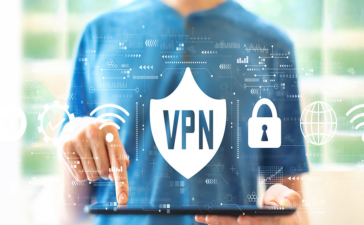Logging in to websites using the traditional authentication methods are no longer the best option. As new technologies continuously develop and fraudsters become more technologically advanced, protecting sensitive data is even more fundamental.
Ensuring secure authentication is vital, given the numerous cybercriminals trying to gain access to personal information. One of the most excellent ways to achieve this is through FIDO2. But what is this authentication standard?
History of FIDO2
To develop a passwordless authentication system, PayPal, Lenovo, Nok Nok Labs, Validity Sensors, Infineon, and Agnito created the FIDO (Fast IDentity Online) Alliance in 2012.
PayPal and Samsung teamed together in 2014 to provide the first FIDO authentication protocol for the Samsung Galaxy S5, enabling users to log in, shop, and make PayPal payments, all with the sweep of a finger. The first complete FIDO passwordless protocol was made available in December 2014.
By 2015, The Alliance launched the FIDO Cooperation and Liaison Program, where they invited groups worldwide to engage on the impact of the development and implementation of FIDO standards.
W3C adopted the FIDO2 2.0 web APIs supplied by the FIDO Alliance and initiated a new standards project in February 2016. The FIDO Alliance wanted to collaborate with the W3C to standardize FIDO authentication across browsers and online platform architecture. In April 2018, FIDO2 was officially introduced.
Defining FIDO2and How It Works
FIDO2 is used to eliminate passwords on the Internet and introduce open and license-free standards for secure authentication. The FIDO2 authentication procedure replaces the conventional dangers associated with a login username and password with the fido login standard.
To achieve this passwordless integration, a secure communication channel must first be built or registered between the client or browser and the required online services to be available for future logins. FIDO2 keys are produced and confirmed throughout this process.
The FIDO2 keys are used in the registration and authentication procedures. Users who register with an online device generate a new key pair on their device, consisting of a public and private FIDO2 key.
Subsequent authentications are only feasible through the use of a private key, which must be unlocked by a user action, such as registering a PIN or inserting separate two-factor hardware. Because these keys are unique to each website and cannot be erased or transferred from a device, they make it easier to perform identity proofing and guarantee the confidence of identification.
Use FIDO2 today!
AuthID is a leading provider of reliable identity authentication solutions that strives to improve client performance and security. Check out their website https://www.authid.com/ or contact them at +1 (516) 274-8700 for more information.






